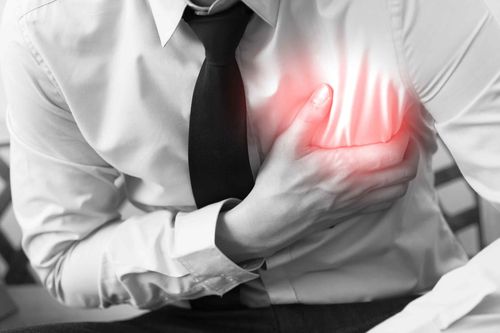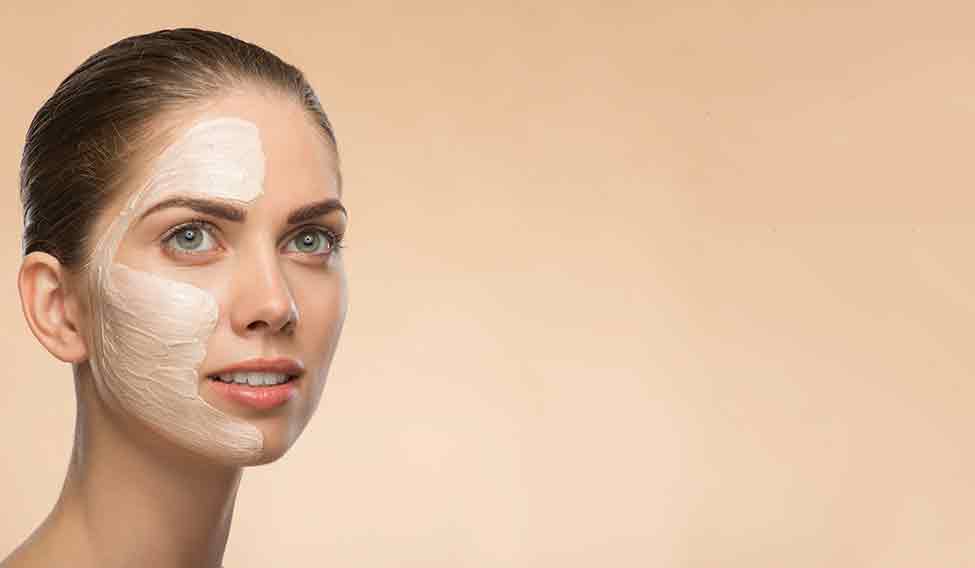Always check the labels before slathering on your favourite creams and lotions. According to the US Food and Drug Administration, some skincare products may contain mercury, which is harmful to health.
Mercury is often found in products that are marketed as 'anti-ageing' or 'skin lightening' and claim to remove age spots, freckles, blemishes, wrinkles and acne.
If the words 'mercurous chloride', 'calomel', 'mercuric' or 'mercurio' are listed on the label, it contains mercury. Stop using the product immediately. According to the FDA, consumers should also avoid products that do not list the ingredients.
Mercury exposure can be hazardous to health. Pregnant women, nursing babies and young children are especially vulnerable. Mercury is passed into breast milk and can cause harm to the developing brains and nervous systems of babies. “Your family might breathe mercury vapours released from these products. Your children might touch washclothes or towels that are contaminated with mercury. It could be as simple as touching someone’s cheek or face,” said a senior medical adviser at the FDA.
Douching troubles
A US study, published in the journal Epidemiology, shows that douching can nearly double the risk of developing ovarian cancer. Douching is washing or cleaning out the vagina with water or other fluids using a device.
Nearly a quarter of women douche thinking it is more hygienic. But vaginas are self-cleaning. Douching can actually disrupt the balance of bacteria in the vagina. It is not recommended by doctors as it can cause yeast infections, pelvic inflammatory disease, ectopic pregnancies, HIV and other sexually transmitted diseases. The study followed 50,884 women, aged 35 to 74 years old, free of breast and ovarian cancer at the onset for nearly seven years.
There were 154 cases of ovarian cancer during the study period. Women who douched during the year before entering the study were twice as likely to develop ovarian cancer. The link between douching and ovarian cancer was even greater when only women who did not have breast cancer genes in their family were considered.

Drinking cancer
Drinking alcohol can cause seven types of cancer, according to a review of several studies over the past decade, published in the journal Addiction. Alcohol consumption can directly cause cancer in seven parts of the body—oropharynx, larynx, oesophagus, liver, colon, rectum and breast.
“There is strong evidence that alcohol causes cancer at seven sites and probably others. From a public health perspective, alcohol is estimated to have caused approximately half a million deaths from cancer in 2012, which is 5.8 per cent of cancer deaths worldwide," the study author wrote.
The relation between alcohol and cancer is dose dependent. While heavy drinkers had the highest risk, there was considerable risk for low and moderate drinkers as well.
The review also found that the risk for head, neck and liver cancers could be reversed when you stop drinking.
“The stakes are high for alcohol industries when there is no argument, on current evidence, for a safe level of drinking, with respect to cancer,” the study said. “Promotion of health benefits, from drinking at moderate levels, is seen increasingly as disingenuous or irrelevant in comparison to the increase in risk of a range of cancers.”
Did You Know
Women who have their appendix or tonsils removed at a young age have a better chance of pregnancy and are more likely to get pregnant sooner.
Fertility and Sterility

Facial protection
Seat belts and airbags can significantly reduce the risk of facial fractures in motor vehicle accidents, according to a US study published in JAMA Facial Plastic Surgery. The researchers reviewed data from 2007-2012 from the national trauma data bank and found that 56,422 (10.9 per cent) of the 5,18,106 people treated at a trauma centre following a motor vehicle collision sustained a facial fracture. Nasal fracture was most common, followed by fracture of the mid-face.
Compared to not using a protective device, the use of an airbag alone reduced the likelihood of a facial fracture by 18 per cent; the use of a seat belt alone decreased the likelihood by 43 per cent; and the use of both decreased the odds of facial fractures in a crash by 53 per cent. The likelihood of a facial fracture was more pronounced for individuals who were younger, male and alcoholic.
“Airbags, seat belts and the combination of the two devices incrementally reduce the likelihood of facial fracture compared with no protective device. This trend can be attributed to advances in airbag technology over the last ten to 15 years,” the study noted.
Did You Know
Sleep disorders like insomnia and sleep apnoea can increase the risk for stroke and hamper recovery.
Neurology

Adding to ageing
Menopause and the accompanying insomnia can accelerate ageing in women, according to two US studies. The menopause study published in the Proceedings of the National Academy of Sciences found that menopause speeds up cellular ageing in women by 6 per cent, increasing the risk of age-related diseases and even early death.
“It's like the chicken or the egg: which came first? Our study is the first to demonstrate that menopause makes you age faster," said the lead author.
The researchers measured the biological age by analysing DNA changes of cells from blood, saliva, and the inner cheek of more than 3,100 women and then compared this with their chronological age. A woman who began menopause at age 42 would be about one year older biologically at age 50 than a woman who began menopause at age 50.
The insomnia study published in the journal Biological Psychiatry found that sleeplessness that often accompanies menopause can also hasten biological ageing.
When the cellular ageing of 2,078 women was assessed, the researchers found that women who experienced five symptoms of insomnia including restlessness, problems falling asleep, disrupted sleep, trouble getting back to sleep, and waking early were almost two years older biologically, compared to women of similar chronological age who did not have any sleep issues.
"Not getting restorative sleep may do more than just affect our functioning the next day; it might also influence the rate at which our biological clock ticks," said the first author of the study.
Did You Know
For people aged 40 and older, working up to 25 hours per week had a positive impact on cognition, beyond which it had a negative impact.
University of Melbourne

Preventing stroke
Stroke is a leading cause of death and disability worldwide, but nine out of ten strokes can be prevented, says a study published in The Lancet.
To identify the main causes of stroke in different populations—young and old, men and women—and within subtypes of stroke, Canadian researchers analysed nearly 27,000 people from 32 countries across the world.
Ten modifiable risk factors accounted for 90 per cent of strokes worldwide. The researchers analysed the proportion of strokes that could be reduced if each risk factor was eliminated. High blood pressure had the biggest impact—the number of strokes could be cut in half (48 per cent) if hypertension was eliminated. Physical inactivity (36 per cent) and lipids (27 per cent) were the other two major factors.
The combined reduction for all 10 risk factors was 90.7 per cent. However, the importance of various risk factors varied by region—hypertension ranged from 40 per cent in western Europe, North America, and Australia, to 60 per cent in southeast Asia. Similarly, the risk of alcohol was lowest in western countries and highest in Africa and South Asia.
“Our findings will inform the development of global population level interventions to reduce stroke, and how such programmes may be tailored to individual regions. This includes better health education, more affordable healthy food, avoidance of tobacco and more affordable medication for hypertension and dyslipidaemia," said Dr. Salim Yusuf, co-author of the study.
Did You Know
People who bike regularly have a 20 per cent lower risk of developing type 2 diabetes than those who do not use the two wheelers.
PLOS Medicine

Walk it off
Just one hour of physical activity per day can offset the increased risk of early death associated with sitting for eight hours or more a day. Watching TV for three hours or more a day was also linked to an increased risk of early death.
Most people spend a major part of their day sitting—at work, in the car, watching TV etc. Physical inactivity has been linked to an increased risk of heart disease, stroke, diabetes, cancer and to more than five million deaths a year. For the study in The Lancet, researchers analysed data from 16 studies including more than a million people who were observed for two to 18 years, during which 84,609 died. The participants were divided into four groups based on their activity level—about five minutes of moderate-intensity exercise a day; 25 to 35 minutes a day; 50 to 65 minutes day; and 60 to 75 minutes a day.
People who sat for eight hours a day, but were physically active, had a much lower risk of death compared to people who sat for fewer hours, but were physically inactive.
The heightened death risk associated with eight hours of sitting was, in fact, eliminated for those who exercised for at least an hour daily. The greatest risk of death was for people who sat for long periods of time and did not exercise. They had a 28-59 per cent increased risk compared with those in the most active group.
WHO guidelines recommend at least 150 minutes of physical activity a week. But only about 25 per cent of people in the study did an hour of exercise a day. People who watch TV for long hours are more likely to have a more unhealthy lifestyle like snacking while watching TV and not exercising.
"For many people who commute to work and have office-based jobs, there is no way to escape sitting for prolonged periods of time. For these people in particular, we cannot stress enough the importance of getting exercise, whether it is getting out for a walk at lunchtime, going for a run in the morning or cycling to work,” the lead researcher added.
Cervical stitches done right
A particular type of thread used to suture the cervix of pregnant women, to prevent preterm labour, can be counterproductive and can actually increase the risk for stillbirth and preterm birth.
The procedure, called cervical stitch, is performed on nearly two million women a year, who are at high risk of miscarriage or premature birth. The process involves placing a stitch in the cervix to keep it closed and delay labour.
Two types of thread are used to suture the cervix: a thicker woven thread called multifilament is used in nearly 80 per cent of the procedures and a thinner thread called monofilament is used in 20 per cent of the cases. The thicker thread is more widely used because it is thought to be stronger, and more efficient at holding the cervix closed. Researchers at Imperial College, London, analysed 671 women who underwent the procedure. Using the thicker thread was associated with a three-fold increase in stillbirth and nearly doubled the risk for premature birth compared to the thinner thread. According to the researchers, switching to the thinner thread for all procedures could prevent 1,70,000 premature births and 1,72,000 intrauterine baby deaths worldwide every year.
"Although the cervical stitch procedure still has benefits for women, our results suggest the thicker thread may encourage the growth of potentially dangerous bacteria in the cervix. This may lead to premature birth or even loss of the foetus. We strongly advise that the thicker thread, which is currently used in majority of procedures, only be used in a research setting while we thoroughly investigate the risks this may hold," the lead researcher suggested. The study was published in Science Translational Medicine.

Meat eaters, beware!
Meat lovers, take note—people who get most of their protein from animal sources have a higher risk of dying early than those who get their protein mostly from a plant-based diet, according to a study published in JAMA Internal Medicine. The researchers used data from two large US studies that involved 1,31,342 participants, with an average age of 49, and up to 32 years of follow-up. They examined the risk for all-cause and cause-specific mortality, in relation to eating animal protein against plant protein.
Every 10 per cent increase in animal protein from total calories was associated with a 2 per cent higher risk of death from all causes and an 8 per cent increased risk of death from cardiovascular disease. Increased mortality among meat eaters was more pronounced among people who were obese and heavy drinkers.
In contrast, every 3 per cent increase in plant protein from total calories was associated with a 10 per cent lower risk of death from all causes and a 12 per cent lower risk of death from cardiovascular disease, especially among people who had an unhealthy lifestyle that included smoking, drinking, being overweight or being physically inactive. Plant proteins seem to offset some of the adverse effects of these risk factors.
Further analysis of specific sources of protein showed that the higher mortality risk associated with animal protein applied primarily to processed and unprocessed red meats and not to protein from fish or poultry.
The study also found that substituting just three per cent of calories from animal protein with plant protein was associated with a lower risk of death from all causes.
"Our findings suggest that people should consider eating more plant proteins than animal proteins and when they do choose among sources of animal protein, fish and chicken are probably better choices,” the study author noted.

Nosy solution
For people suffering from chronic nasal congestion, saline nasal irrigation seemed to ease symptoms, but steam inhalation did not, according to a British study published in the Canadian Medical Association Journal.
Steam inhalation and nasal irrigation are the two most commonly recommended treatments for sinus infection, other than antibiotics. But how do they compare?
To find out, the researchers randomly assigned 871 patients suffering from sinusitis to one of four treatments: usual care, daily steam inhalation, daily nasal irrigation supported by a demonstration video, or a combination of both nasal irrigation and steam inhalation.
While patients who used daily steam inhalation alone did not see any improvement, those who used daily nasal irrigation showed improvements in nasal congestion at both three and six months of follow-up.
"We found potentially important changes in other outcomes; in particular, fewer participants in the nasal irrigation group than in the non-irrigation group had headaches, used over-the-counter medications and intended to consult a doctor in future episodes," the authors added.

Advantage, bookworm
A chapter a day keeps the doctor away! Add reading to your daily routine and it will relieve stress, keep your mind sharp and help you live longer.
For the study, published in the journal Social Science & Medicine, researchers at Yale University followed 3,635 people aged 50 or above, for 12 years. The participants were divided into three groups based on their reading levels—read no books, read for up to 3.5 hours a week and read for more than 3.5 hours a week. Book readers were generally women, more educated and earned more. Even after accounting for these and other factors, book readers lived about two years longer than non-readers. They enjoyed a 20 per cent lower mortality risk over the course of the study.
Compared to those who did not read books, people who read for up to 3.5 hours a week were 17 per cent less likely to die over the study period and those who read for more than 3.5 hours a week were 23 per cent less likely to die in the study period. A similar, but weaker, link was seen among those who read newspapers and periodicals. “These findings suggest that the benefits of reading books include a longer life in which to read them,” the study concluded.
Directional edge
Adjusting to different time zones when travelling can be exhausting and make you tired and lethargic. So how does it affect the outcome for professional athletes who may have to travel constantly?
According to a study presented at the American Academy of Sleep Medicine meeting, athletes travelling from west to east have a greater advantage and are more likely to win, when compared to those travelling east to west. The researchers compared game outcomes and the direction of travel for five years of regular season games for the National Basketball Association, the National Football League and the National Hockey League in North America. In all three sports, teams travelling from west to east had a higher winning percentage compared to teams travelling east to west.
"These results highlight the importance of circadian rhythms in sport performance and show that the effect of the circadian disadvantage transcends the type of sport and needs to be addressed for greater equity among the western and eastern teams in professional sports. They also raise concerns about well-established practices such as early training sessions and late-night athletic competitions and the possible negative effects on performance and health," noted the study co-author.
Contributor: SHYLA JOVITHA ABRAHAM






